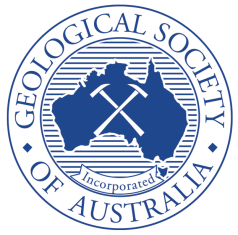  
Dorchap Range & Buchanan’s Creek: two Li-Cs-Ta pegmatite systems separated by a billion years and 2000 km
Despite being separated by over 2000 kilometres and forming over a billion years apart and containing some distinct mineralogical differences, the Dorchap Range pegmatite dyke swarm in northeast Victoria, and the Buchanan Creek pegmatite dykes in Queensland share several commonalities. Here, we introduce both systems and discuss the shared and distinct characteristics for lithium mineralisation, alteration, and the implications for exploration.
Both systems are characterised by fractionated Lithium-Caesium-Tantalum (LCT) dykes. The Dorchap Dyke Swarm is located in the northeast Victorian high country, near the settlements of Mitta Mitta and Glen Wills, with the mapped dykes swarm spanning approximately 80 by 20 km. The dyke swarm was emplaced in the late Silurian and exhibits a near-textbook fractionation trend with a general P>Cs>Be>Nb?Ta>Li>Sn pattern of enrichment. Lithium mineralisation is primarily hosted in spodumene and petalite, with subordinate lepidolite and amblygonite, and eucryptite and cookeite occurring as alteration phases. The Buchanan Creek pegmatites, located near Georgetown in northeast-central Queensland, are in a more preliminary state of study; however, the dykes were likely emplaced during the Mesoproterozoic (ca. 1430 Ma), with mineralisation dominated by lepidolite and amblygonite, and minor spodumene, cassiterite and tantalite. Despite these distinct differences, these distinct systems share some structural and geochemical similarities related to their emplacement and subsequent alteration processes.
Speaker
Dr. Ben Hines
Geological Survey of Queensland
Ben has a diverse background in geoscience. He completed a PhD in geochemistry, tectonostratigraphy, and basin analysis at Victoria University, New Zealand, and has previously worked in the minerals exploration industry as a geologist and exploration manager, as well as in national and state geological surveys.
Previous positions and research has included shipboard geologist roles in the Tasman and Sub-Antarctic, magneto- and isotope stratigraphy of early Cenozoic sequences, detrital heavy minerals and apatite fission track analysis, foraminiferal Mg/Ca paleothermometry, chemostratigraphy and source rock analysis in eastern New Zealand, and Sr isotope dating of molluscan carbonates. Exploration roles have been spread across a variety of systems, including orogenic gold, Cu-Au-Mo porphyries and intrusion-related gold systems, in addition to LCT pegmatites.
As a geologist and then exploration manager for Dart Mining, he provided a major contribution to the mapping and sampling of the Dorchap Dyke Swarm in northeast Victoria. Since joining the Geological Survey of Queensland, work has centred around the secondary prospectivity of mine waste and the Buchanan Creek pegmatite dykes.

Event Details
Tuesday, 9 July 2024
5pm for 6pm talk
Join live at the Transcontinental Hotel, 482 George Street, Brisbane QLD or online via Zoom
Cost
FREE
Zoom meeting details
Join from a PC, Mac, iPad, iPhone or Android device:
Please click this URL to join. https://us02web.zoom.us/j/89912529201?pwd=eEFNNUFwVjl4bTB2QUM2QjVGNWtwdz09
Passcode: 423056
Or One tap mobile:
+61871501149,,89912529201#,,,,*423056# Australia
+61280156011,,89912529201#,,,,*423056# Australia
Or join by phone:
Dial(for higher quality, dial a number based on your current location):
Australia: +61 8 7150 1149 or +61 2 8015 6011 or +61 3 7018 2005 or +61 7 3185 3730 or +61 8 6119 3900
Webinar ID: 899 1252 9201
Passcode: 423056
International numbers available: https://us02web.zoom.us/u/kc9lRsOe5q |
 -
Date and time
9 July 2024
5pm for 6pm
-
Location
Transcontinental Hotel
|